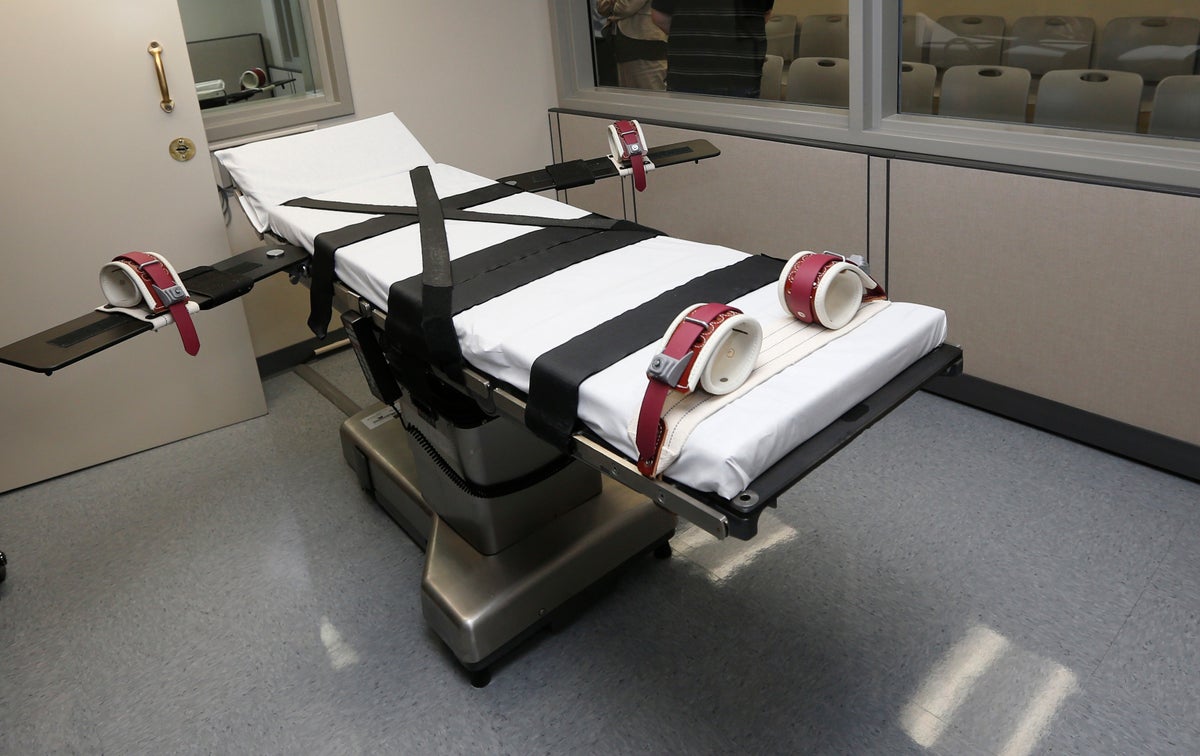
A scheduled execution in Alabama that was called off Thursday after prison officials couldn't find a suitable vein to inject the lethal drugs into is the latest in a long history of problems with lethal injections since Texas became the first state to use the execution method in 1982, including delays in finding usable veins.
Here's a look at some of the issues states across the country are facing when it comes to lethal injections.
WHAT HAPPENED IN ALABAMA?
Alabama's lethal injection protocol calls for two intravenous lines to be connected, with the second line to be used in case of a problem with the first. Department of Corrections Commissioner John Hamm said prison staff were able to successfully establish one line on Thursday during its attempt to executed Kenneth Eugene Smith, but were unsuccessful with a second line, even after trying several locations on Smith's body.
Officials then attempted to establish a central line, which involves a catheter placed into a large vein and occasionally the use of a scalpel to enlarge the insertion site, but ultimately decided to call off the execution after realizing they were not going to be able to complete that procedure before Smith's death warrant expired at midnight.
It is the second execution since September the state has canceled because of difficulties with establishing an IV line with a deadline looming. In another Alabama execution earlier this year, prison officials poked Alan Eugene Miller with needles for more than an hour trying to find a vein, and at one point left him hanging vertically on a gurney before state officials made the decision to call off the execution.
On Friday, Smith’s lawyers filed an emergency motion asking to meet with Smith at the prison where he is incarcerated and for a judge to order the state to preserve notes and other materials that might detail what happened in the failed execution.
WHAT'S HAPPENED IN OTHER STATES?
Numerous other states that use lethal injection have encountered various problems with the execution method in the almost 40 years it's been used, including difficulty finding usable veins, needles becoming disengaged or problems with the lethal chemicals.
In Oklahoma in 2014, condemned inmate Clayton Lockett writhed, clenched his teeth and attempted to lift himself up from the gurney after he had been declared unconscious when the state used a new drug, the sedative midazolam, in its three-drug method. Although prison officials attempted to halt the execution, Lockett was declared dead 43 minutes after the procedure began.
An investigation later revealed that a single IV line into Lockett's groin, which was covered by a sheet, came loose and the lethal chemicals were injected into the tissue surrounding the injection site instead of directly into the bloodstream. The execution team didn't realize the problem until they pulled back the sheet and noticed a swelling larger than a golf ball near the injection site.
In Ohio in 2006, Joseph Clark's lethal injection was stalled while prison technicians located a suitable vein, which then collapsed and Clark's arm began to swell. Clark raised his head and said: “It don’t work. It don’t work.” Technicians ultimately found another vein, but Clark wasn’t pronounced dead until nearly 90 minutes after the process started.
WHY ARE THERE PROBLEMS FINDING VEINS?
There are a number of different reasons why it can be difficult, even for experienced medical professionals, to set an IV into someone's vein, said Dr. Ervin Yen, an Oklahoma City anesthesiologist who has witnessed several executions in Oklahoma as an expert hired by the state's Attorney General's Office.
Some people are just predisposed to having problematic veins, while other people's veins have become difficult to use if they've spent a lot of time in hospitals with IVs or frequent blood draws, Yen said.
“Some inmates are going to be IV drug users who may have used up their veins that way,” Yen said.
Oftentimes, veins can be difficult to find if a person is dehydrated, he added.
WHAT STEPS ARE STATES TAKING TO ADDRESS THESE PROBLEMS?
In Oklahoma, after the botched execution of Lockett, state prison officials spent $71,000 renovating the death chamber, including $6,000 for an ultrasound machine to help members of the execution team locate veins. They also installed new lighting and new audio and video equipment so the condemned inmate can be more closely monitored.
Oklahoma also revamped its execution protocols to require more training for the execution team.
But it's often difficult to know all the steps states are taking to update their execution protocols, because so many details are shielded from the public, said Ngozi Ndulue, the deputy director of the Death Penalty Information Center.
“States have tried to keep as much information about the conduct of executions secret," Ndulue said.
Another problem many states face is a lack of medical professionals willing to take part in executions because of ethical concerns, she said.
“Requirements around training vary from state to state, and because a number of medical professionals are unwilling to be involved in executions, they’re usually very minimal in terms of training," Ndulue said. “There are also protocols that are silent about what background the execution team must have.”







